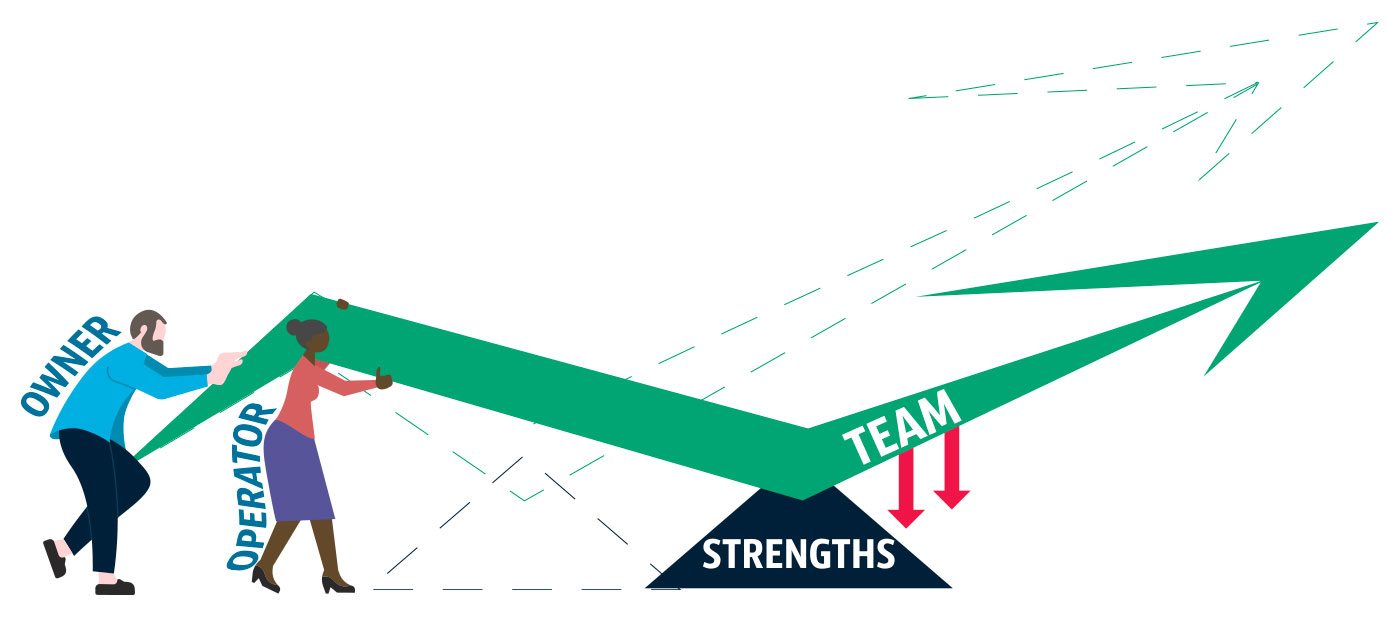
Growth for an entrepreneur often feels like a constant pursuit. One that requires a continuous process of making critical decisions as to which actions should be taken. Many fail when the pursuit exceeds their capacity, while others succeed when their current capacity is properly leveraged.
Over the last two decades of working with hundreds of businesses, I’ve seen several businesses become so stretched by their pursuit of opportunities that a proverbial vacuum is created, sucking the oxygen and life out of other – sometimes all – efforts. The result is failing to capitalize on opportunities successfully. Holding in a pattern of pursuit without success eventually leads to businesses failing altogether.
There’s a solid argument that leveraging should be the approach in most cases, however, pursuing under ideal circumstances can also lead to positive outcomes. Understanding the two approaches and where your business is in terms of risk tolerance is critical when determining which is appropriate.
Leveraging Opportunity
Leveraging opportunities requires a focus on your team’s existing skills, knowledge, and strengths as well as resources already in place to drive growth. It’s about directing what your team excels with when creating an environment where their strengths can be fully utilized. By drawing from capabilities already in place within your organization, you can achieve significant outcomes with less effort and risk.

Regardless of where you are in the home care entrepreneurial continuum (from just starting out with a team of one or two, or enjoying multi-million-dollar successes), applying your effort through your team leads to far greater results than when owners and operators attempt to do it all themselves. Leverage – as the image illustrates – is about applying influence at the right point to generate more lift on the other side. The points of “contact” matter when working to create effective lift.
In the previous illustration, effort exists to the left of the fulcrum (current strengths) and the outcome to the right. Effort, when leveraging opportunities comes through a combination of influence from the owner, direction from the operator, and execution through the team. If the strengths of your agency are closer to the effort being applied, optimal lift occurs on the right. When effort is applied to goals beyond your agency’s strengths, it’s counterproductive in a lever since the force on the right of the fulcrum creates more resistance against the lift.
See how the distance between the effort and the company’s strengths reduces the lift in this image.

We often speak of running a team-managed agency as being the most effective means for sustainable and meaningful growth. By leveraging your team, you foster a sense of empowerment and a shared responsibility for the positive outcomes to be celebrated by the entire company. Employees feel valued and recognized for their contribution. When their skills are leveraged for realistic growth, their morale is boosted rather than a sense of only a transference of “owner overwhelm” to them occurring.
The space in the second illustration between the owner and operator and the agency’s strength is the stretch that forces far more effort from the owner/operator and – as shown – results in less overall lift. Unintentionally, but quite naturally, the team ends up creating a downward resistance against goals when the pursuit is beyond their strengths.
These illustrations apply to goals in any aspect of your agency: increased quality care, improved caregiver training, greater outcomes in marketing efforts, obtaining more client/caregiver feedback, expanding to additional services, etc. The strengths to factor in as part of what you leverage include (but are not limited to):
- Individual Team member skillsets
- Relationships – with referral partners, caregivers, clients, and others in the community
- Team Capacity – time available through staff and caregivers to take on growth
- Technology in use
- CRM or other communication automation
- Scheduling software
- Billing software
- Current training for staff
Pursuing Opportunities
- How long will it take for your team to get up to speed?
- How much additional training or support is needed to equip them for success?
- How will the learning curve affect current projects and deadlines?
- Am I in a position where the risks associated can be financially tolerated and not negatively impact team morale?
Striking the Right Balance
As an owner pursuing growth, knowing when to say, “Let’s Go!”, “No”, or “Not now.” to opportunities can be quite challenging. In those early days as well as pivotal moments when revenue is necessary to sustain the business, declining an opportunity seems absurd to consider. However, the key to sustainable growth at any point in any business is finding the right balance between leveraging and pursuing opportunities. Accepting profitable opportunities over those that may not be as rewarding in the end.
Opportunity Costs aren’t only incurred when you don’t take opportunities; they also harm growth when pursuing the wrong opportunities.
An incredible tool we’ve developed is the Core Compass. This tool helps owners, and their operators, set boundaries to protect against being stretched beyond capacity – individually and as an organization. Because the focus and direction of your agency begins with you, the owner, it’s crucial to get yourself centered around these four areas covered in the Core Compass:
- My Big WHY – both personal and professional.
- Non-Negotiables – What are you not willing to compromise on? Things you don’t want to be required to do and your unmovable end result.
- Referring Client Outcomes – What outcomes would make your clients Refer, Review, and Recruit?
- Right-Fit Clients – Which type(s) of clients can you most consistently deliver solutions to right now?
And, the next step is...
You can go to https://homecareops.com/core-compass-download/ and get a free guide to walk you through the steps to build your Core Compass to help determine which ways you can better leverage opportunities through your agency or if you’re ready to stretch a little more and pursue opportunities.
You’ll quickly discover that through leveraging opportunities based on your present strengths, the wins and outcomes will put you in a better, more risk-tolerant position to adjust, increase your team’s capacity, and pursue even greater opportunities.













